When to Plant Snapdragons: A Guide for Gardeners
Snapdragons are a popular choice for gardeners who want to add a splash of color to their outdoor space. These beautiful flowers are easy to grow and care for, making them a great choice for beginners and experienced gardeners alike. However, knowing when to plant snapdragons can be a bit tricky, as they have specific requirements that must be met in order for them to thrive.
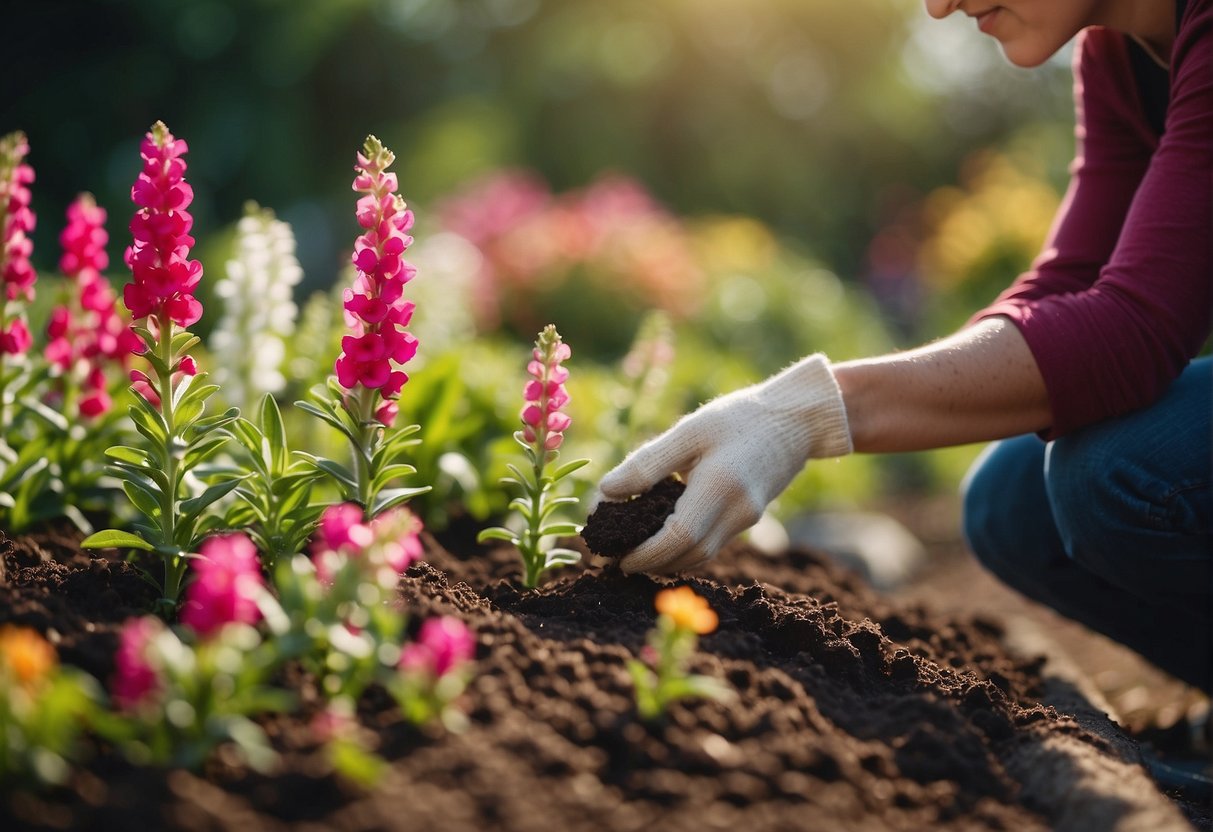
One of the most important things to consider when planting snapdragons is the timing. These flowers prefer cool temperatures and can be planted in the spring or fall. In areas with mild winters, they can also be planted in the winter for early spring blooms. It’s important to avoid planting snapdragons during the hot summer months, as they do not tolerate heat well and may not survive.
When preparing to plant snapdragons, it’s important to choose a location that receives plenty of sunlight and has well-draining soil. These flowers also benefit from regular watering and fertilization. With the right care and attention, snapdragons can provide a beautiful display of color in any garden.
Understanding Snapdragon Varieties
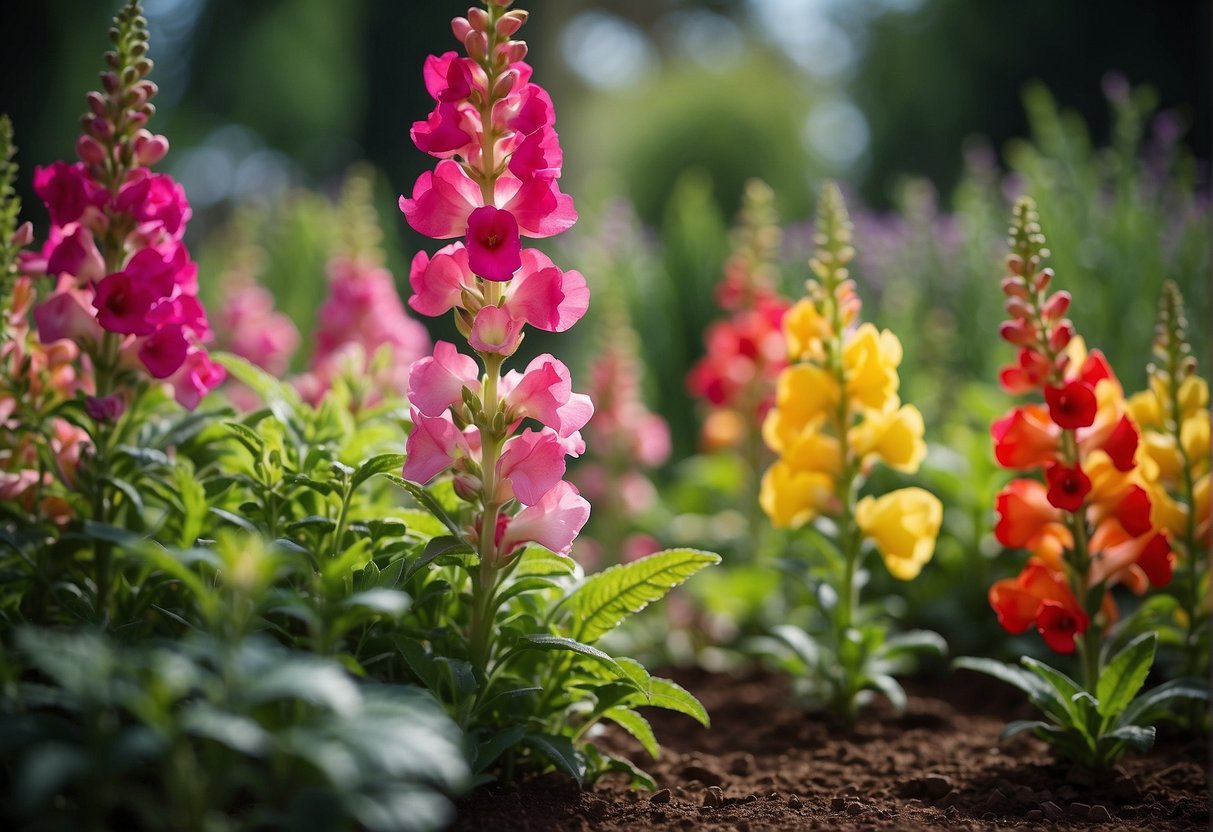
Snapdragons are a popular choice among gardeners due to their vibrant colors and unique shape. There are many varieties of snapdragons available, each with its own unique characteristics. Understanding the different types of snapdragons can help gardeners choose the right variety for their garden.
Annual vs Perennial Snapdragons
Snapdragons can be either annual or perennial. Annual snapdragons complete their life cycle in one growing season and die off at the end of the season. Perennial snapdragons, on the other hand, can live for several years and typically bloom year after year.
Annual snapdragons are a popular choice for gardeners who want to add color to their garden for a single growing season. Perennial snapdragons, while less common, are a good choice for gardeners who want a long-lasting addition to their garden.
Size and Color Variations
Snapdragons come in a wide variety of sizes and colors. Dwarf snapdragons are a popular choice for borders and edging, while tall snapdragons are often used as a backdrop for other plants. Rocket snapdragons are a tall variety that produces many flowers on a single stem, making them a good choice for cut flower arrangements.
Madame Butterfly snapdragons are another popular variety that produces unique, double blooms. They come in a range of colors, including red, white, yellow, pink, and orange.
When choosing snapdragons, it’s important to consider the size and color of the plant, as well as the growing conditions in your garden. By selecting the right variety of snapdragon, gardeners can enjoy beautiful blooms throughout the growing season.
Optimal Planting Times
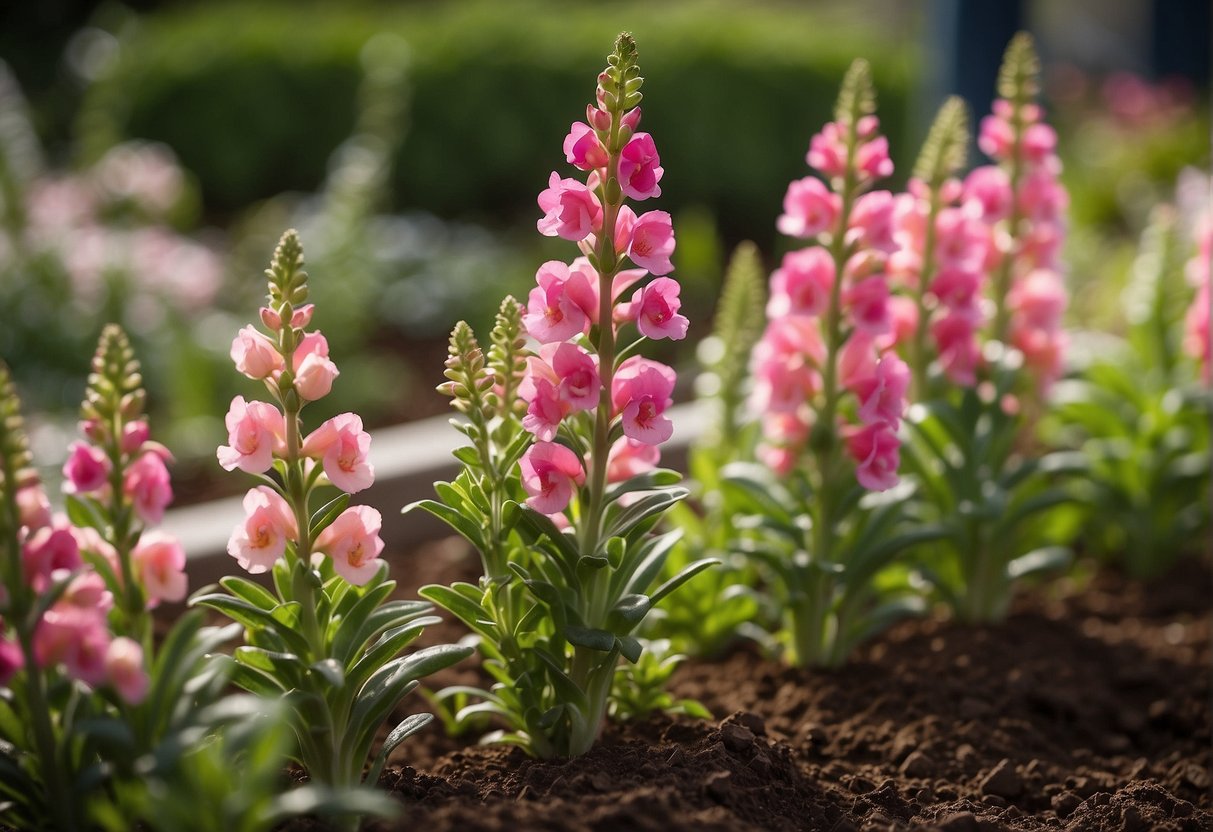
Snapdragons are a popular choice for gardeners who want to add some color and texture to their garden. However, planting them at the right time is crucial for their growth and survival. In this section, we’ll discuss the optimal planting times for snapdragons.
Best Months for Planting
Snapdragons can be planted in both spring and fall. However, the best time to plant them is during the cool weather of early spring or fall. This is because snapdragons prefer cooler temperatures and can struggle in the heat of summer.
In the spring, snapdragons can be planted as soon as the soil is workable. This is usually around March or April in most regions. In the fall, snapdragons should be planted at least 6-8 weeks before the first frost date. This will give them enough time to establish themselves before the cold weather sets in.
Considering the Last Frost Date
Snapdragons are sensitive to frost and can be damaged or killed if exposed to it. Therefore, it’s important to consider the last frost date when planting snapdragons.
In most regions, the last frost date occurs in late spring or early summer. This means that snapdragons planted in the spring should be planted early enough to avoid any late frosts. In the fall, snapdragons should be planted early enough to establish themselves before the first frost date.
Overall, planting snapdragons during the cooler months of spring and fall, while considering the last frost date, will give them the best chance of thriving in your garden.
Soil and Sunlight Requirements
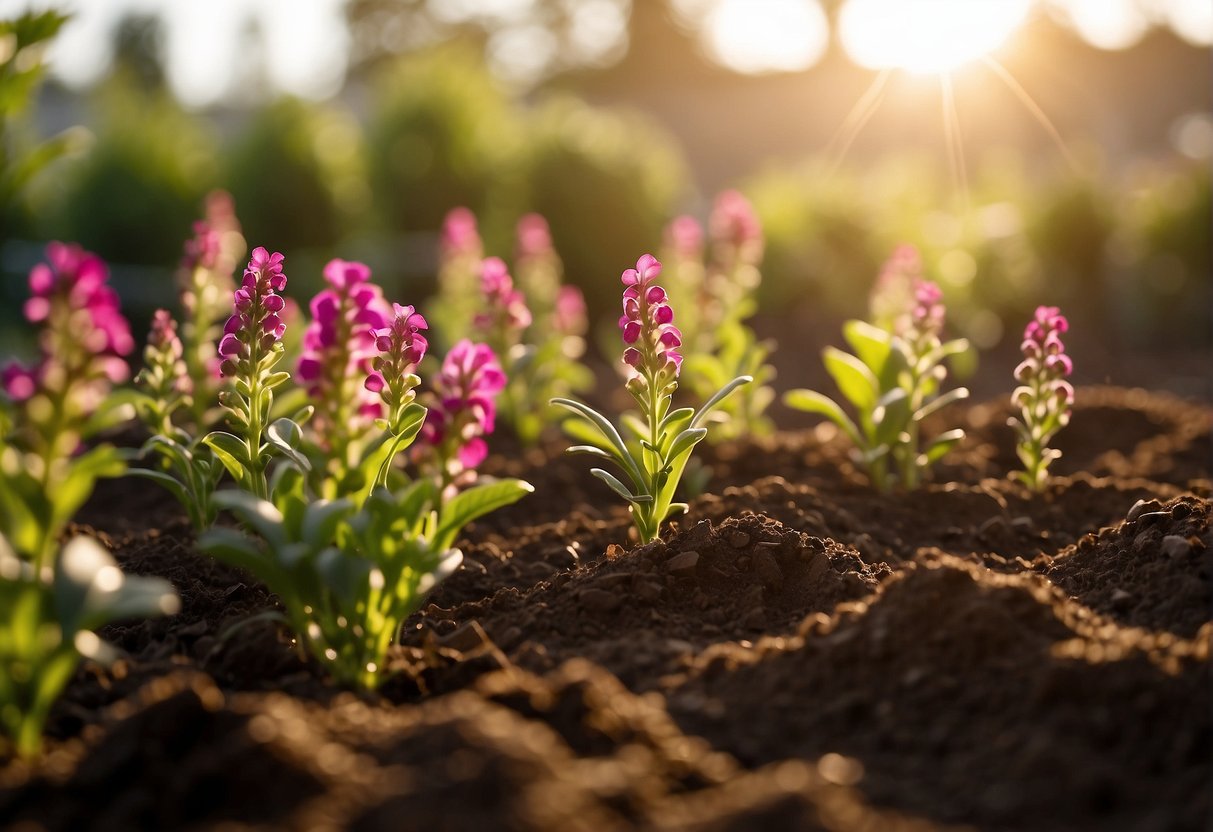
When it comes to planting snapdragons, it is important to consider the soil and sunlight requirements to ensure healthy growth and blooming. Here are some important factors to keep in mind:
Soil Preparation and pH Levels
Snapdragons thrive in well-drained soil that is moist and rich in organic matter. Before planting, it is recommended to prepare the soil by adding compost or other organic matter to improve soil quality and drainage. The ideal pH level for snapdragons is between 6.0 and 7.5. It is important to test the soil pH level and adjust accordingly before planting.
Sun Exposure and Temperature
Snapdragons prefer full sun exposure for optimal growth and blooming. However, they can also tolerate partial shade. It is important to note that snapdragons do not do well in hot temperatures and may require some shade during the hottest parts of the day. The ideal temperature range for snapdragons is between 60°F to 75°F.
By ensuring proper soil preparation and pH levels, as well as providing adequate sun exposure and temperature, gardeners can successfully plant and grow snapdragons.
Planting and Care Instructions
Snapdragons are a popular choice for gardeners who want to add some color and texture to their outdoor space. Here are some tips for planting and caring for your snapdragons:
Sowing Seeds Indoors and Outdoors
Snapdragons can be started indoors or outdoors depending on your preference. If you choose to start them indoors, sow the seeds in late winter or early spring in a well-draining soil mix. Keep the soil moist and place the container in a warm location until the seeds germinate. Once the seedlings have grown a few inches tall, transplant them into larger containers or directly into the garden.
If you choose to sow the seeds outdoors, wait until the soil has warmed up in the spring. Sow the seeds directly into the garden bed, spacing them about 6 inches apart. Keep the soil moist until the seeds germinate.
Watering and Fertilization
Snapdragons require regular watering to thrive. Water deeply once a week, or more frequently during hot and dry weather. Avoid getting water on the leaves, as this can lead to disease.
Fertilize snapdragons every 4-6 weeks with a balanced fertilizer. Be sure to follow the instructions on the label and avoid over-fertilizing, as this can lead to leggy growth and fewer flowers.
Pest and Disease Management
Snapdragons are relatively pest and disease-resistant, but there are a few issues to watch out for. Aphids can be a problem, particularly on new growth. If you spot aphids, spray the plant with a strong stream of water or use an insecticidal soap.
Powdery mildew, root rot, and rust can also affect snapdragons. To prevent these diseases, avoid overhead watering and make sure the soil is well-draining. If you do spot signs of disease, remove affected leaves or plants and dispose of them in the trash (not the compost pile).
By following these simple planting and care instructions, you can enjoy beautiful snapdragons in your garden or containers all season long.
Encouraging Healthy Growth
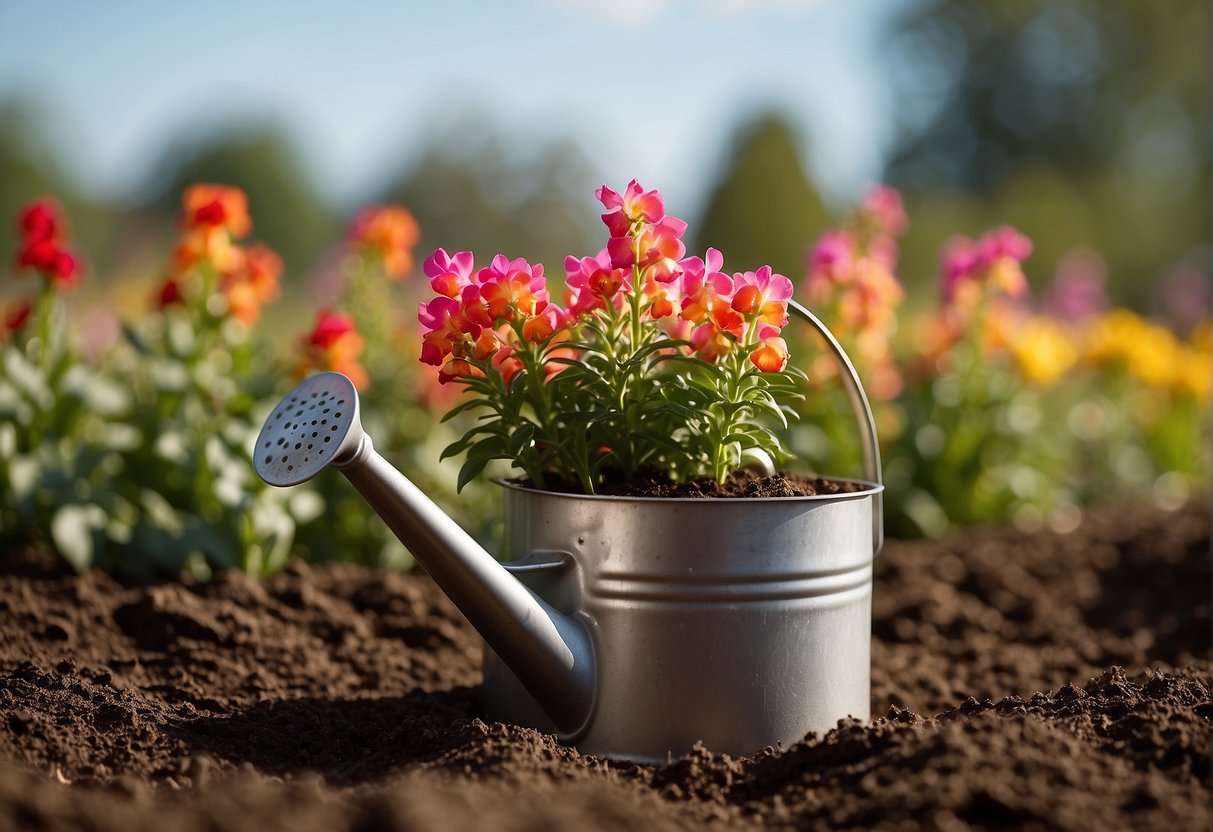
Snapdragons, known for their vibrant colors and unique shape, are a popular choice for gardeners looking to add a pop of color to their outdoor space. However, in order to ensure healthy growth and an abundance of blooms, proper care and maintenance are necessary.
Pinching and Deadheading
Pinching and deadheading are two important techniques that can help promote bushy growth and extended blooming periods. Pinching involves removing the tips of the main stalks, which encourages the plant to branch out and produce more flowers. Deadheading, on the other hand, involves removing spent blooms to prevent the plant from putting energy into seed production and instead focus on producing more flowers.
To pinch snapdragons, use a pair of sharp scissors or pruning shears to snip off the top inch or two of the main stalks. This should be done when the plant is still young and has only a few sets of leaves. Deadheading should be done regularly throughout the blooming period, removing any spent blooms as soon as they begin to fade.
Supporting Tall Varieties
Some snapdragon varieties can grow quite tall, reaching heights of up to three feet. To prevent these tall stalks from bending or breaking under the weight of their blooms, it is important to provide support. This can be done by staking the plant or using a cage or trellis.
When staking snapdragons, choose a support that is at least as tall as the plant and insert it into the ground next to the main stalk. Gently tie the stalk to the support using a soft material like twine or plant tape. For cage or trellis support, choose a structure that is sturdy enough to hold up the plant and its blooms without bending or collapsing.
By using these techniques and providing proper care, gardeners can encourage healthy growth and abundant blooming in their snapdragons.
Frequently Asked Questions
What is the best time of year to plant snapdragon seeds?
Snapdragon seeds should be planted in early spring, after the last frost, or in late summer for fall blooming.
How should snapdragons be spaced for optimal growth?
Snapdragons should be spaced 6-8 inches apart in rows that are 12-15 inches apart. This will allow for optimal growth and prevent overcrowding.
Can snapdragons thrive in containers, and if so, how should they be cared for?
Yes, snapdragons can thrive in containers. The container should be at least 6 inches deep and wide, with drainage holes at the bottom. The soil should be well-draining and moist. Regular watering and fertilization are necessary for optimal growth.
What are the tips for ensuring continuous blooming in snapdragons?
Deadheading, or removing spent flowers, is essential for continuous blooming in snapdragons. Regular fertilization and adequate watering will also promote continuous blooming.
Are snapdragons perennial plants that will return each year?
Snapdragons are typically grown as annuals, but some varieties may come back as perennials in mild climates.
How do you successfully grow snapdragons from seed?
Snapdragon seeds should be sown indoors 8-10 weeks before the last frost or directly sown outdoors after the last frost. The soil should be kept moist until germination, which typically takes 7-14 days. Once seedlings have grown to a few inches tall, they can be transplanted outdoors.


